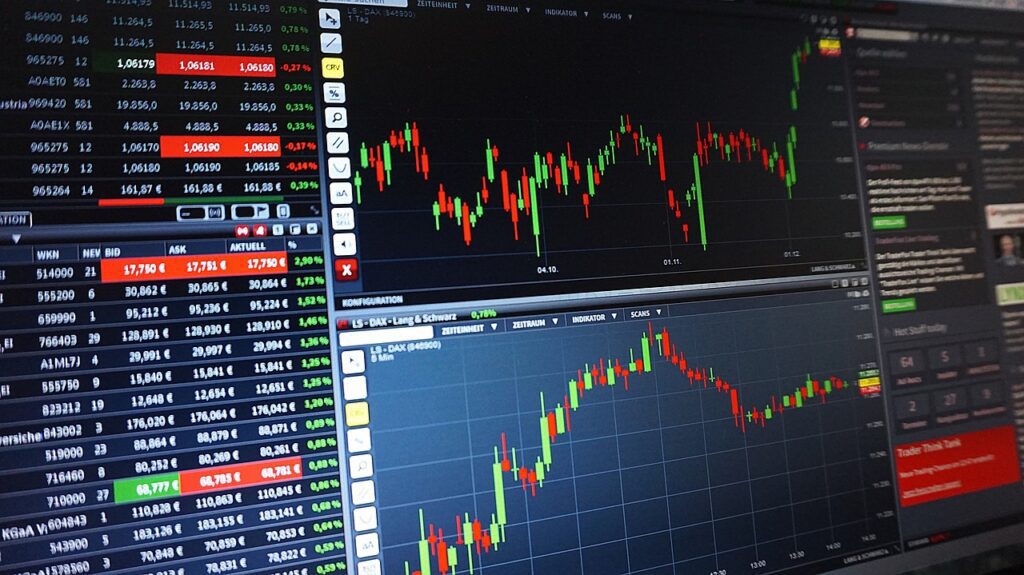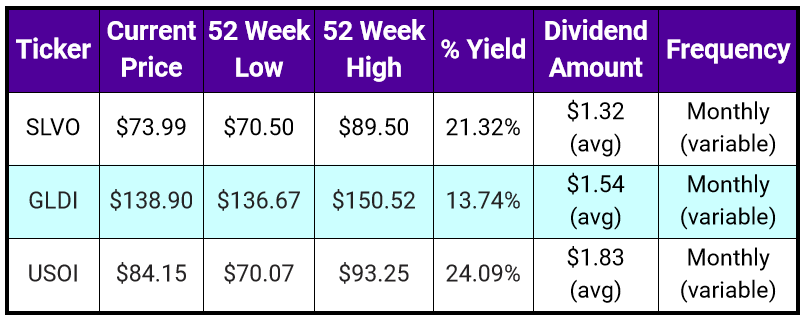What up, IIN-siders! Another month down; another month closer to freedom and passions I hope. I’m going to borrow a snippet from an article I read on Sure Dividend for some important points. They sum up my thoughts exactly.
Can an Investor Really Get Rich From Dividends?
The short answer is “yes”. With a high savings rate, robust investment returns, and a long enough time horizon, this will lead to surprising wealth in the long run.
For many investors who are just starting out, this may seem like an unrealistic pipe dream. After all, the S&P 500 dividend yield is currently a paltry ~1.5%. This doesn’t seem like a high enough rate to really make someone rich…
Despite this, dividend growth investing remains one of the most straightforward, repeatable ways to become rich.
Beyond ‘riches’, the ultimate goal of most people reading this is to retire wealthy and to stay retired. Financial independence provides flexibility, freedom and a lot of options in life for you. Getting there is usually the challenging part.
Financial independence is achieved at the dividend crossover point. The dividend crossover point is the situation where your dividend income exceeds your expenses.
Sure Dividend
The article goes on to address things that are in the investor’s control, such as rate of return, length of time in the markets, how much you contribute each month or year, and the fees that each investment has.
The points I wanted to emphasize were financial independence and the dividend crossover point.
Financial Freedom Through Investing
The whole reason for income investing is to obtain financial independence, plain and simple. How you achieve financial independence is by hitting the dividend crossover point where you make more than you spend.
We strive hard each and every week to present ideas to you that you can then use to generate 10% on your money. Our emails, newsletters, podcast episodes, and posts are all aimed at getting you the very best income you can get with whatever money you can invest.
Last month we presented HRZN, HTGC and XYLD to you guys. At the time that I write this up HRZN is up around 3% plus it keeps paying its $0.11 monthly dividend.
HTGC is literally trading sideways, which generally means it will trade up in the near future.
XYLD is up around 3% from when I wrote the September newsletter, plus it paid a $0.38 dividend for September. So to summarize you could have made 2-3% by holding these 3 stocks as well as collected $0.49 in dividends per share.
Profitable for sure, but I’m sure it will change in the near future. All news is bad news currently. That means it sucks to watch your principal go down and down and down.
But if you have your DRIP on, you’re getting more shares at a deep discount on all of your holdings. And as you’ll notice with some experience, this reduces your losses and increases earning when things turn around.
So with that said, let’s move over to the core of this month’s newsletter.
Exchange Traded Notes
I want to go over Exchange Traded Notes (ETNs). ETNs are types of unsecured debt securities that track an underlying index of securities and trade on a major exchange just like a stock.
ETNs are similar to bonds but don’t have interest payments. Instead, the prices of ETNs fluctuate like stocks. An ETN is typically issued by financial institutions and bases its return on a market index.
ETNs are a type of bond. At maturity, the ETN will pay the return of the index it tracks. However, ETNs do not pay any interest payments like a bond.
When the ETN matures, the financial institution takes out their fees and then gives the investor cash based on the performance of the underlying index.
Since ETNs trade on major exchanges, investors can buy and sell them like stocks to make money from the difference between the purchase and sale prices, minus any fees.

ETNs are different from ETFs where ETFs own the securities in the index they track. For example, an ETF that tracks the S&P 500 will own all 500 stocks in the S&P.
Conversely, ETNs don’t provide investors ownership of the securities but are merely paid the return that the index produces. This makes ETNs more similar to debt securities. The investors must trust that the issuer will make good on the return based on the underlying index.
ETNs You Can Add To Your Portfolio
Three of my favorite ETNs are: SLVO, GLDI, and USOI. SLVO tracks the silver index, USOI tracks the crude oil index and GLDI tracks the gold index.
Personally, I would rather own an ETN than physical gold or silver. I don’t want to have to bring a safe on the road with us in the van, so it’s much easier to buy ETNs.

SLVO – Credit Suisse X-Links Silver Shares Covered Call ETN
SLVO, Credit Suisse X-Links Silver Shares Covered Call ETN is an exchange traded note launched by Credit Suisse AG, Nassau Branch. The note seeks to track the performance of the Credit Suisse NASDAQ Silver FLOWS 106 Index.
The index represents the commodity markets across the globe. It takes long and short positions to represent the iShares Silver Trust through covered call options. The ETN will mature on April 21, 2033.
Simply put, this is a monthly paying ETN that tracks the price of silver. It’s a good hedge for those of you who want to have some of your portfolio in precious metals. I like it because you don’t have to physically hold silver, but can still get the perks of investing in silver.
SLVO is a BUY up to $77.
GLDI – Credit Suisse X-Links Gold Shares Covered Call ETN
GLDI, seeks to replicate, net of expenses, the Credit Suisse NASDAQ Gold FLOWSTM 103 Index. The index measures the return of a “covered call” strategy on the shares of the SPDR® Gold Trust (the “GLD Shares”) by reflecting changes in the price of the GLD Shares and the notional option premiums received from the sale of monthly call options on the GLD Shares less notional trading costs incurred in connection with the covered call strategy.
This low beta, 0.12, investment is your gold hedge. It carries the same risks, and same rewards as SLVO, your silver hedge. I would rather receive 13% yield per year and not have to house and care for the physical gold bars.
Again this is my opinion. I know a growing number of people would much rather have physical gold. To each their own.
GLDI is a BUY up to $140.

USOI – Credit Suisse X-Links Crude Oil Shares Covered Call
USOI, The Credit Suisse X-Links™ Crude Oil Shares Covered Call ETNs (such exchange traded notes, the “ETNs”) are senior, unsecured debt securities issued by Credit Suisse AG, acting through its Nassau Branch, that provide a return linked to the performance of the price return version of the Credit Suisse Nasdaq WTI Crude Oil FLOWS™ 106 Index (the “Index”).
The ETNs may pay a variable monthly coupon based on the notional option premiums, if any, generated by the Index’s hypothetical monthly sale of call options on the shares of the United States Oil Fund, LP (such shares the “USO Shares”).
USIO is the riskiest of all the ETNs we’re discussing. And because of that, I would not have more than 1% of my total portfolio in this investment. Yes, it’s nice to get 24% for an oil investment. But there are very good MLP’s or REIT’s or even common stocks paying 12%-20% that are much less risky.
The reason I say this is risky is if you analyze the one-year and three-year returns, you’ll see that the index USOI follows has returned 28% for one year and 124% for three years, while USOI has been much, much, MUCH worse.
USOI has returned -1.4% for one year and -2.52% for three years, but these numbers don’t include the dividend payouts. Even when dividends are included, USOI is well behind the benchmark index.
USOI is a BUY when the price is below $75.00.
Again do not overbuy this in relation to your overall portfolio. Currently, USOI is too high in price to buy. I would wait for the next crude oil downturn before picking up this investment.

Things You Need To Know Before Buying ETNs
ETNs do have a few drawbacks that you need to know about before investing in them. If any of these points don’t sit well with you, don’t invest in this type of asset.
Variable Dividend Payouts
Unlike fixed income assets, ETNs payouts fluctuate from payment to payment. Some months are way higher than other months, so it does require some budgeting to use these.
FYI, all the ETNs that we’re going to be covering pay a variable dividend – meaning each month’s payout varies. In order to estimate payouts, we determine an average by taking the total sum of the last 12 payouts and dividing by 12.
I know that not having a consistent dividend amount can be frustrating for those of you who want a consistent payout for bills or retirement, but it is what it is. If you want the diversification of these ETNs then part of the process of holding them is to adapt your budget to the variable payout.
Smaller Volume
All of these ETNs have smaller volumes compared to most other investments. This means it can take time to fulfill your buys when using limit orders. Market orders can sabotage your buy-in price significantly, so I don’t recommend using them.
Higher Risk
For those of you who are worried about risks, SLVO, GLDI and USOI are not insured against downside loss. And these ETNs can be delisted at any point without prior notice. So there are a few gambles you’re taking on by investing in these ETNs.
The covered call strategy they employ does limit the upside gains, but in theory it also mitigates the down side loss. Basically, don’t invest money that you can’t afford to lose as these ETNs are somewhat risky.
For me, the yields these ETNs pay monthly makeup for any of the risks that you take on.
DRIP Isn’t Available
These ETNs are not eligible for DRIP, so you get paid cash every month. If you want to reinvest, you have to do it manually. It might be a little inconvenient, but I think this is actually beneficial because I don’t like automatically reinvesting in things with higher risk anyway.
Investing Strategy for ETNs To Reduce Risk
Due to the risky nature of these ETNs, I’ve developed a simple strategy to help mitigate losses.
I take the cash payouts from these ETNs and invest it into other assets in my portfolio. I do this until I’ve made back my initial investment, and only then do I consider reinvesting their payouts back into the ETNs.
To do this, you’ll want to keep track of your initial investment and payouts manually. For our portfolio, I invested $5,200 into SLVO and $4,875 into USOI. To date I have only collected $407 from SLVO and $358 from USOI.
Once I collect more than $5,200 in dividends in SLVO and more than $4,875 in dividends in USOI I will start reinvesting in them if they’re at a favorable market price.
I do this because I want to make sure I get my initial investment back first so if anything happens I’m not really out any money. Hopefully that makes sense.
I estimate that by the end of 2024 I should be playing with house money in both SLVO and USOI.

What’s Coming Up
So there we have another month in the books, but it’s almost time for the Santa Claus Rally. If you don’t know what that is, you’re in for a treat. Pretty much every year from October through the end of December the markets all go up.
Now obviously it isn’t every year, but most years. The Santa Claus Rally technically means that 75% of the time the markets all are positive by an average of 2% the week before and after Christmas.
What I’ve found is that October and November also have positive numbers. So to me, the Santa Claus Rally pertains to the markets having a higher probability of going up from the beginning of October through December 31. But that’s just my perspective as I’m not an “expert”.
Next month’s issue of the IIN Newsletter will be a banger. We’re finally going to address YieldMax ETFs. They kind of kick ass!
There’s a lot of cash to be gained through these ETFs from YieldMax. But as with everything else, they do have some risk associated with them much like the ETNs we discussed today. But I say YOLO Minions!
If you mitigate risk by diversifying, not holding too much of your portfolio in these types of investments, and employ my strategy to take your initial investment off the table, you’ll be golden.
As always, thank you so much for subscribing to our emails, listening to our podcast, and engaging with us on our socials. Our goal here is to make you more knowledgeable about investing and to provide you with the tools and resources to empower yourself financially.
Until we meet again, keep on keeping on.
